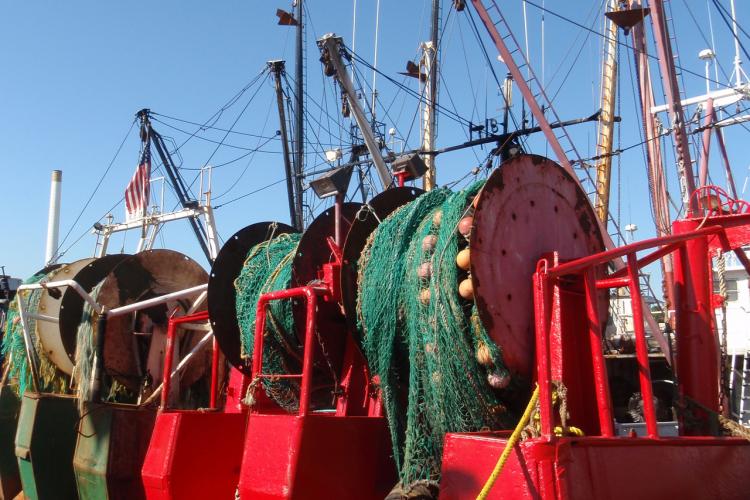The U.S. fishing industry lost nearly one-third of its revenue in the first seven months of 2020 as the covid-19 pandemic vaporized its major markets, according to a new analysis by NMFS.
The year started on a high note, with revenues up 3 percent in January and February – before diving 19 percent in March and cratering at 45 percent less in July, said Paul Doremus, deputy administrator for operations at NMFS, in a telephone conference with reporters Friday.
Cumulatively, “over those seven months we’re looking at a 29 percent decrease,” said Doremus.
The agency mobilized its economic experts and government and academic partners in March to document the impact of the pandemic and begin preparing “as comprehensive an account as we could,” said Doremus.
The findings were compiled in a report with more than 100 pages of supporting documents, including detailed region-by-region breakdowns, by authors and economists Rita Curtis of the NOAA Fisheries Office of Science & Technology and Steve Kasperski of the agency’s Alaska Fisheries Science Center.
While the report only documents the industry’s situation up through July, “we’ve already initiated the work to do that next update,” said Curtis. The goal is to continue monitoring economic impacts and fishermen’s response, drawing lessons and strategies for making fishing communities more resilient, said Doremus.
The biggest blow early was restaurant and food service shutdowns, which normally account for 70 percent of purchases for the $200 billion annual industry. Some fisheries that supply shelf-stable product lines, such as surf clams, felt less impact, but fresh markets dried up across the board.
Among shellfish growers, 74 percent reported significant losses – even with limited respite when outdoor dining was allowed in summer months. “Harvesting, processing, and distribution have been curtailed for many products and in some cases have ceased in response to restaurant and other closings throughout the country and globally,” the authors summarized. “Further, the industry’s outlook in the coming months is highly uncertain.
“However, those interviewed indicated that in contrast to the fresh fish market, consumers dramatically increased supermarket purchases in late March 2020 of shelf stable and frozen product forms – including canned tuna, Alaska pollock and king mackerel. Sales figures for this surge in supermarket sales published in the seafood and food trade press and ranged from over a 100 percent increase in sales of canned tuna fish compared to the same week last year to a percent increase in sales of frozen seafood compared to the same week last year.”
One bright spot is signs the pandemic has wrought a shift in consumer behavior, raising interest in healthy diets and more people preparing seafood at home, said Doremus.
But the report notes “indications are not yet available as to whether or not sales of frozen and canned seafood will remain strong.
"In addition, some industry participants are shifting from supplying restaurants to expanding sales to supermarkets and to online or direct-to-consumer sales. But the extent and volume of the pivot from restaurants to supermarket and direct-to-consumer sales has yet to be estimated."
Other key points in the report include:
- “Florida’s spiny lobster fishery is heavily dependent upon the Chinese market; market reports indicate that many fishermen ceased operations due to the collapse of that market.”
- “ In Oregon and Washington, fish ticket data indicates that the March ex-vessel price of sablefish is down 31 percent and 39 percent, respectively, relative to 2019.”
- “The Atlantic Highly Migratory Species (HMS) fishery, which is almost entirely dependent on providing high-end fresh fish to the restaurant market, experienced 70% to 90% revenue losses in March as increasingly widespread restrictions were placed on restaurants both domestically and globally.”
- “Canned tuna sales from American Samoa were up 31percent in March but increasing disruptions to the supply chain (including closed ports typically used for offloading, and difficulties exchanging crews) may threaten future operations.”
- “Dealers of high-valued tuna and swordfish products on the East Coast and Gulf of Mexico reported that they were telling fishermen to switch to other species that have more marketability with supermarkets. One Southeast dealer summed up his concerns as, ‘paying fishermen, paying employees and keeping the lights on.’”







